
A Trek to Remember: Splendor of the Red and Blue Lakes of Fotoksar
Tashi Dolma, a resident of Fotoksar, reflects on the transformation of her serene village into a hidden gem for responsible tourism. Faced with the challenges of changing trekking patterns and the construction of a road, Tashi collaborates with an Ecotourism company to pioneer a sustainable tourism model. Guiding Charline, a solo traveler from France, on an adventurous trek to the Red and Blue lakes, Tashi discovers the profound impact of cultural exchange. As the journey unfolds, Tashi and Charline forge a deep friendship amidst the rugged beauty of Ladakh, offering a glimpse into the potential of tourism to revive Fotoksar’s traditional way of life.
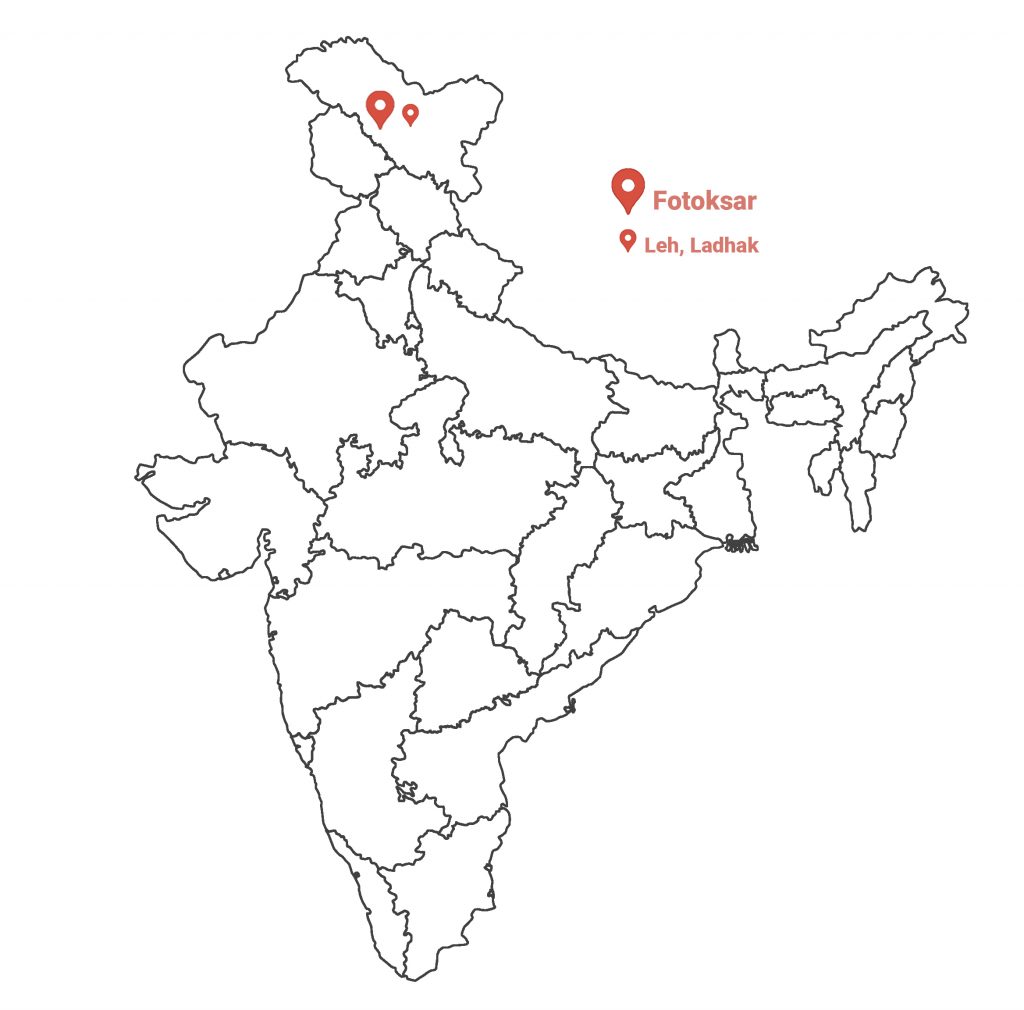
Storyteller : Tashi Dolma,
Himal Prakriti Fellow
Fotoksar Village, Leh, Ladakh
Read this story in Hindi
It has always bothered me how undervalued my serene village of Fotoksar has been in terms of tourism. Nevertheless, Fotoksar has always been a traditional staging point on the trek called ‘The great crossing of Zanskar’. Many foreigner trekkers have been coming in large groups and as there were only a few home stays in my village, there was not enough accommodation for them. So they end up camping nearby instead of staying in the village.
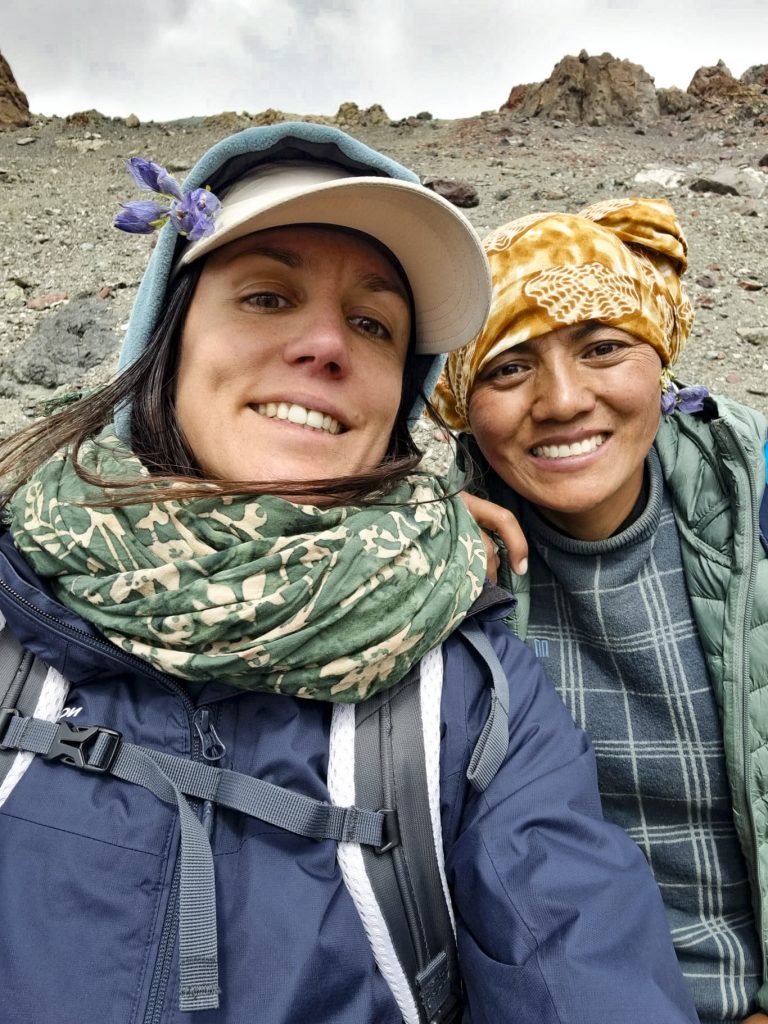
In 2019 the government constructed the road from Wanla to Padum that now goes through Fotoksar. Since then, no trekkers are interested in trekking the great crossing. Instead, Fotoksar has seen a new kind of tourists- of families coming with their private cars. These family-sized groups are interested to stay in home stays but there are very few tourists willing to stay in Fotoksar since they can reach Padum in one day.
I was constantly looking out for ways to help my village and people when I met Stephan and his organization Himalayan Ecotourism. He and his team had some expertise in the field of Ecotourism in Himachal Pradesh. Together we discussed how we could create a platform of Ecotourism in Fotoksar and make it a tourist destination. We ideated on possibility of developing few activities in and around Fotoksar, like showcasing the cultural activities, Ladakhi cooking classes, inviting spiritual leaders for some teachings. We spoke about identifying new trekking routes from the village itself which will attract responsible tourists and help villagers earn a livelihood through tourism.
I remember a significant remark from Stephan which I really liked:
“If tourism can be a good source of income, it could also damage the social harmony of the village.”
To keep unity among the villagers, we founded the ‘Fotoksar Tourism Development Committee’ along with my friend Tsering and other members of the youth club of Fotoksar.
Just some days after this hopeful step, I received a call from Stephan informing me that they have a client coming from France, called Charline, who was keen to go on a trek around Fotoksar. I immediately volunteered for the task. Since the Red lake is an unexplored destination among travelers, we decided this lake could be a good trekking destination to start with and then trek could continue on to the Blue lake.
We met Stephan and Charline at the Chulam home stay, which is just in my neighbourhood. Charline, a solo traveler, greeted me with a mix of confidence and sweetness on her face. I was excited and nervous at the same time about the trek, but meeting Charline brought a sense of calm in me. That night we cooked dinner together and I taught Charline how to make momos.

On the morning of the first day of the trek, I went to the home stay to meet Charline. She was getting ready for the departure and looked very enthusiastic, as if she needed to fill herself with all possible energies before venturing forth on this lifetime adventure. She smiled at me and she seemed to be uncertain about how to greet me more warmly than with a “Julley”. Thinley (my uncle) who was the trek leader was with the pony man finishing loading the mules. We started our trek from the home stay. It took about half an hour to leave the village, its empty fields and surrounding habitation.

We were now in the wilderness of the Himalaya, the only kind of wilderness I know. A river flowing through gentle slopes with scant vegetation not taller than a few inches, surrounded by barren steep rocky cliffs with glaciers sitting on their top. I asked Charline if there are mountains in her country. She said yes, but there are very different mountains because of the dense forests that cover them. I felt like I would prefer living in such green mountains, but Charline seemed to be liking the mountains of Ladakh. I felt suddenly proud of living here, and glad to be heading to the special place of the red lake and the blue lake, hidden between the highest mountains of my region. From then, we were sharing the same level of admiration for the landscapes that we were passing through.

On reaching Puthang, a large meadow where our shepherds used to come with their animals, we saw a few orange-brown marmots eating grass. I explained to Charline that marmots are considered to be very helpful animals as they alert the shepherds and herders by making sounds to warn of the threat of a leopard or wolf, and saving their animals. We continued walking towards Pu Spang Chen Mo and we had to cross the river three times with ice cold water which surely disturbed Charline a little. But as it was a sunny day it felt bearable.

By lunch time we reached the campsite which brought a sense of relief amongst us. I along with Charline and others set up the tent and prepared lunch. After lunch, we took a stroll around and Charline’s eyes sparkled with excitement as she discovered edelweiss and wild roses. She was fascinated by the medicinal plants that our village amchi (local doctor) usually comes here to collect. These medicinal plants help people suffering from several acute illnesses. She was surprised to hear that such practices were still alive here, as very few people are left with knowledge about medicinal plants in her home country.
Our exploration continued as we went to the natural spring from which we drew water for drinking, cooking and washing. The warm sun had now surrendered to cold winds which prompted us to go look for some fuel wood. Instead all we could collect was some dried cow dung. Charline wondered about the origins of our fuel wood for the evening to which I elaborated that the shepherds come to this region in the morning with their cattle for grazing and in the evening, they return to lower grounds with whatever firewood they could collect. As the evening proceeded it became apparent that the cow dung alone was not going to suffice for the warmth. This led to us on a scavenger hunt again for the dry bushes and small twigs.
Under the starlit sky we all sat to have delicious dinner and were engrossed in the conversation around how different an upbringing Charline and I had, picturing this gulf between our backgrounds. And just how these mountains have brought us closer, irrespective of the disparity in our circumstances.

I woke up early next morning and it was freezing cold as the summertime was ending and the harvest season was over. With Thinley, we made breakfast and packed lunch in the kitchen tent. It was going to be a long day’s trek to the Red and the Blue lake.
We started the trek at 8, leaving our main luggage at the campsite as we were to spend the second night at the same place. I told Charline that we would reach the Red lake within one hour and she was very excited and took my hand. I felt good. From now on, we were friends, a team of two young women. There was no more a client and a local trekking staff, as we were two souls heading to our little paradise. Shortly after crossing a small pass, the Red lake appeared in front of us. There was no doubt about it, the Red lake is … red, like the colour of earthen clay dishes.

We sat at some distance from the lake where the view was just magical. The Red lake is surrounded by red mountains and glaciers. Charline told me that she had never seen something so fascinating. While sitting and admiring the scenery, both our heads were leaning against each other.

Thinley asked us to resume the hike, as we still had a long day of walking to reach the Blue lake and had to return to the basecamp. We started walking again, but this time, it was much more challenging. Charline’s GPS was showing an altitude of 5100m and Thinley was pointing the way forward through a very steep and rocky slope. There was no more vegetation, instead we started encountering patches of snow.
Charline was panting and I could feel how much she was struggling for each step. There were no more trails, and it became so steep that one could have perished in a deadly fall. I was also pushing myself to climb and to not look weak. I kept on smiling at Charline. I felt it was my role to be her moral support. Having to help someone, you forget about your own pain and from your compassion, you find within yourself that extra energy to share with your friend in need.
It took almost two hours to reach Manthang la. On reaching the pass, I found Charline to be lively again. Manthang la is the highest point of the trek (5570m), so when we reached the top, it was a kind of accomplishment as we had reached our goal. When we had a look around us, the horizon was a series of countless peaks and glaciers, some of them seemed to be hundreds of kilometers away.
If the Red lake was magical, Manthang la was just a marvel. The mountains are like that, you need to deserve them, you need to suffer, you need to align your mind and body to reach your goal. And when you have reached your goal, you are someone else, you have grown stronger as a person, you forget about your day-to-day life to realize what really matters: to develop yourself to accomplish your purpose of life.
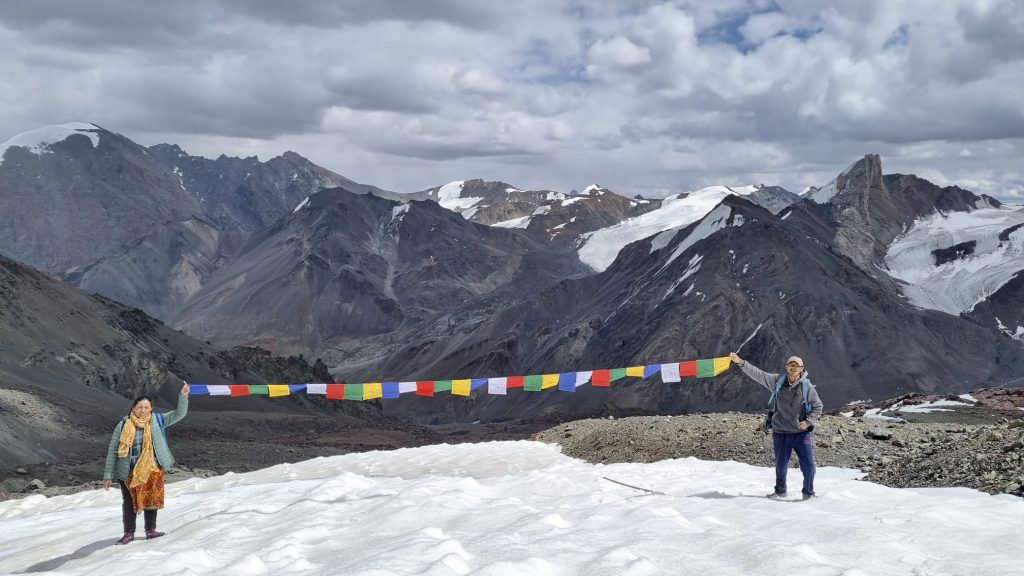
On the other side of the pass, a huge glacier was lying below our feet. We moved a bit on the side of the pass to find rocks and place our prayer flags by doing the due rituals. The Blue lake was just down the glacier, about 3 kilometers away from the pass. We could see it from the pass. Charline told me that we could end the trek here and go back, but Thinley was already going down, walking on the glacier. We had to follow him. The descent was easier, but I saw that Charline was a bit scared of walking on the ice, especially when we had to cross small crevasses. We stopped walking before reaching the lake because the glacier was becoming dangerous with larger cracks in the ice. We were satisfied with having reached there. And we decided to go back.
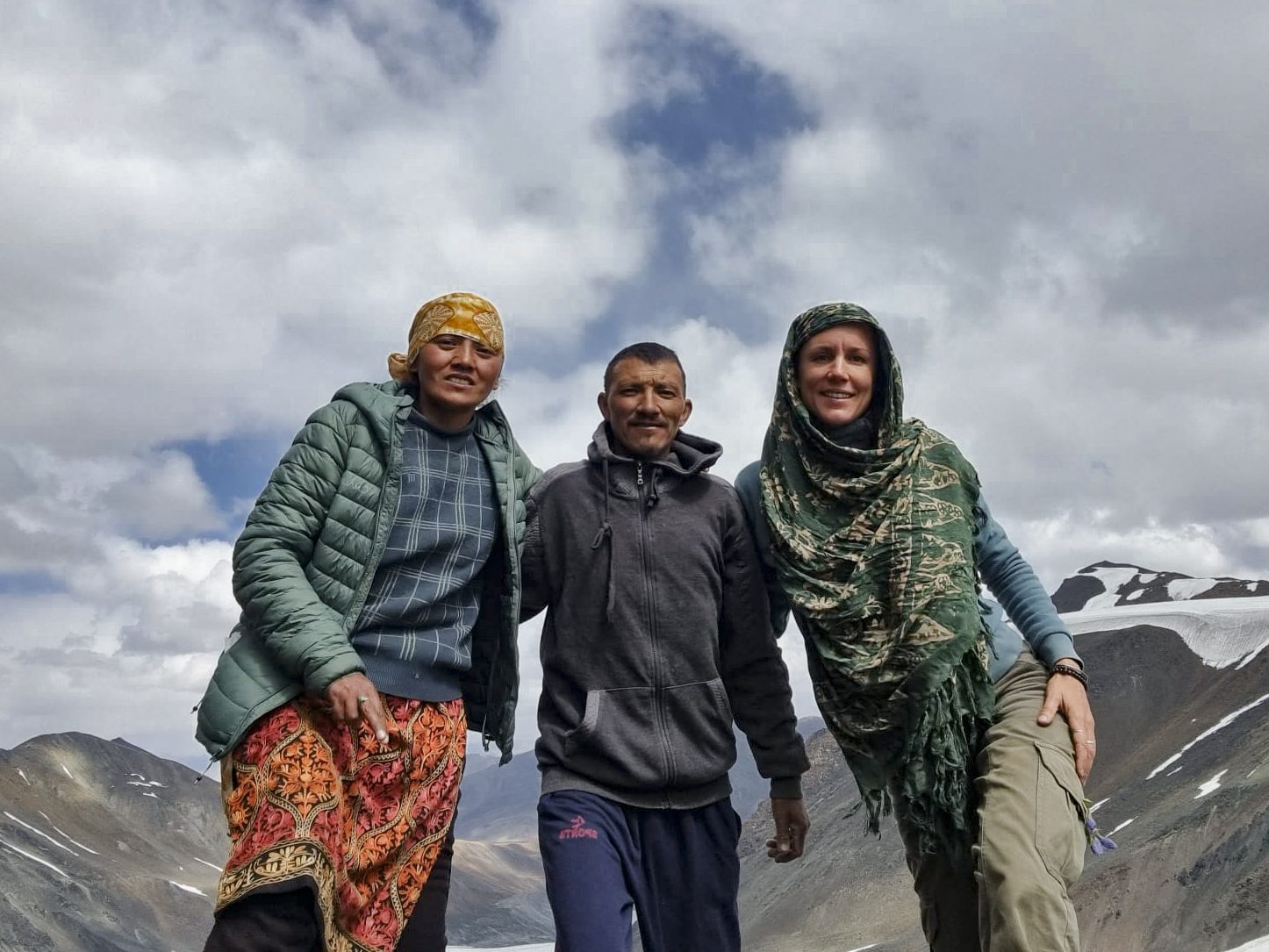
We reached the Manthang la again. Charline was complaining about a severe headache. I was also feeling the same, but I guess not as bad. We easily descended to the Red lake and continued towards the base camp. We had to cross the river three times, and as the sunlight was gone, it was very difficult to warm up ourselves. At the last river crossing, Charline refused to go. She asked if there was any way to avoid crossing the river. When I told her that it was not possible, she started crying. I took her in my arms and we crossed the river together. She was so grateful and I felt that our friendship took another dimension. The mountains taught us something else: the love between two people can help overcome the toughest time in life.

We were soon back to the base camp and we played games in the night, while Thinley and the pony man were cooking for us.
We spent our second night at the campsite. I had to share my blanket with Charline as she was feeling very cold after such a tiring day.
On the third day, we decided to go and see the Kangri Mermer, the glacier from which flows the water of Fotoksar. There were a lot of yaks around our camp. Out of curiosity, a huge Yak even approached the tent of Charline who quickly ran away, unaware that these animals are not aggressive. There were 3 villagers who had come early in the morning to graze their animals. Along with the yaks were also some beautiful pashmina goats.

We started again at 8 in the morning. We crossed a small pass and reached the glacier and came back the same way. When we reached the base camp, I tried to explain to Charline how life is tough for the villagers of Fotoksar. The villagers were used to managing with their minimal resources. But with the recent economic development of Ladakh, the villagers have developed new needs. They now want a phone, a television, and many other modern facilities. They now have the need to earn money. But the fact is that there are very few economic opportunities in Fotoksar. And so, the villagers tend to migrate to the cities in search of a job. Many end up as drivers or get a job in the army. The village lifestyle seems to have lost value in the eyes of these villagers and I find it tragic.
What’s the future of my village?
The traditional way of life is vanishing. There is a deep loss of heritage.
I shared these thoughts with Charline. We wondered if ecotourism in Fotoksar can be made a consistent source of income and that could make our village a nice place for the youngsters to live. Charline understood very well what I was telling her, and she was proud to be the first woman trekker to have reached the Red lake with me.
On the fourth day, we just had to trek back to the village.
Without having to be engaged in challenging physical efforts, we enjoyed the descent remembering our extraordinary adventure. For three days, we laughed and cried together, we shared so many stories, we played, cooked together. We enjoyed each other’s company and became friends forever.
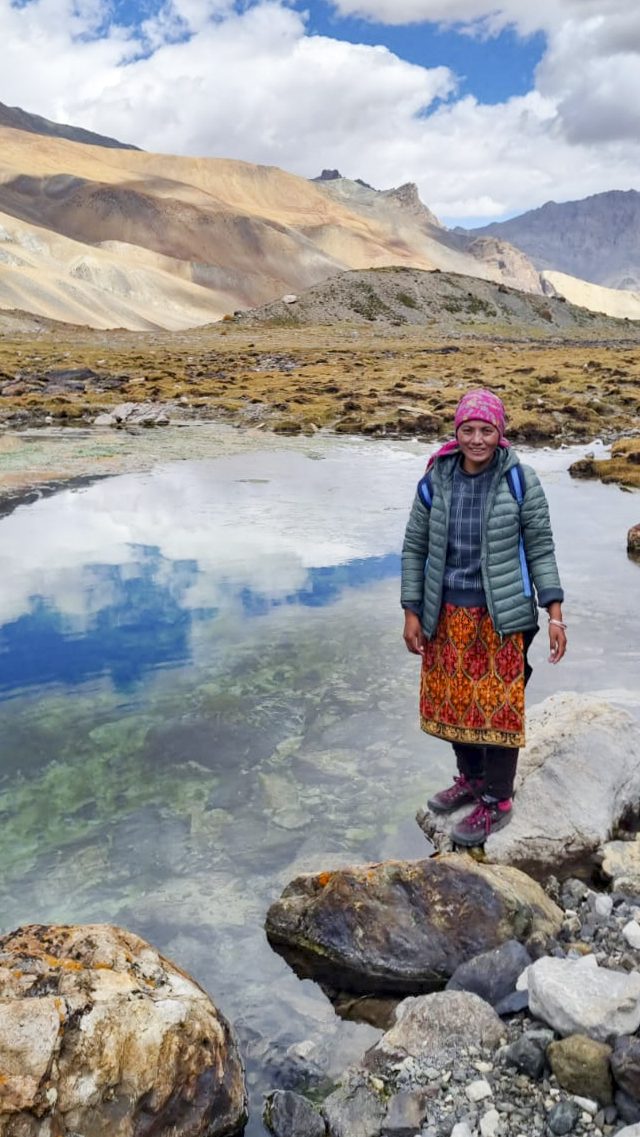
That’s how I envision tourism for my village: encountering new and respectful people, sharing love, learning from them, making them discover my culture and my native environment, being amazed by the beauty of my Ladakh, and earning a bit of money to make life in Fotoksar valuable again.
Meet the storyteller







